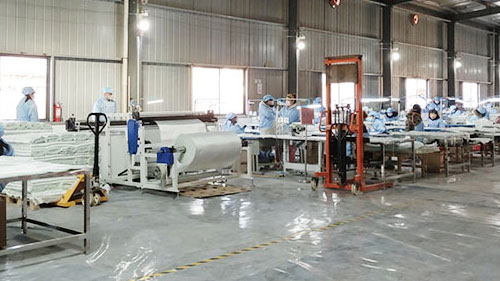Fire Resistant Silicone Fiberglass Fabric: Properties, Uses, and Benefits
Overview:Explore the science behind fire-resistant silicone fiberglass fabric, its key properties like high-temperature tolerance & insulation, and its uses in welding, HVAC, and electrical safety.
Fire-resistant silicone fiberglass fabric is a versatile high-performance material widely used in industrial, construction, and safety applications. Combining the strength of fiberglass with the protective properties of silicone coating, this fabric offers exceptional resistance to heat, flames, and environmental damage.

What Is Silicone Coated Fiberglass Fabric?
Silicone coated fiberglass fabric is composed of a fiberglass base cloth coated with silicone rubber, often on one or both sides. This combination results in a material that is both flexible and durable, capable of withstanding temperatures ranging from -70°C to 280°C, with some variants capable of resisting temperatures up to 550°–1,000°C. It is known for its excellent resistance to burning, aging, and chemicals, making it a go-to material for high-temperature environments.
Key Properties and Advantages
1. High-Temperature Resistance:
This fabric can endure extreme heat without melting or degrading, making it ideal for applications involving sparks, molten metal, or open flames. It is capable of withstanding temperatures up to 280°C consistently, with some specialized versions resisting even higher temperatures.
2. Fire Resistance:
The fabric doesn't combust easily and can act as a barrier against fire and heat. It meets fire safety standards such as UL94 V-0, meaning it effectively resists flame spread and reduces risks in fire-prone settings.
3. Flexibility and Durability:
Unlike many traditional fire-resistant materials, silicone fiberglass fabric remains soft and pliable. It can be easily cut, shaped, and sewn into various forms, such as blankets, curtains, and protective covers.
4. Chemical and Environmental Resistance:
The silicone coating provides resistance to oil, water, and many chemicals. It also stands up to UV exposure, ozone, and weathering, making it suitable for both indoor and outdoor use.
5. Electrical Insulation:
With high dielectric strength, this fabric is widely used in insulating electrical components, such as cables and transformers, protecting against high-voltage hazards.

Common Applications
Welding and Metalworking: Used as welding curtains and blankets, it protects workers and equipment from sparks and spatter.
Industrial Insulation: Applied in pipeline and HVAC systems, it helps in insulating equipment and managing thermal expansion.
Fire and Safety Equipment: Found in fire blankets, escape masks, and protective clothing, it provides critical safety in emergencies.
Electrical Insulation: Used for insulating cables, transformers, and electronic components, thanks to its non-conductive properties.
Aerospace and Automotive: Employed in thermal shields, gaskets, and expansion joints for its lightweight yet resilient nature.

How to Choose the Right Fabric?
When selecting silicone coated fiberglass fabric, consider:
Thickness and Weight: Thicker fabrics (e.g., 0.8mm–2mm) offer better durability and heat resistance.
Coating Type: Single-side coating is cost-effective for one-sided protection, while double-side coating offers full encapsulation.
Color Coding: Standard colors like silver-gray, red, or white can help organize safety protocols or blend with equipment.
Conclusion
Silicone coated fiberglass fabric is an essential material for industries requiring reliable heat and fire protection. Its unique blend of flexibility, durability, and resistance to extreme conditions makes it a standout choice for improving safety and efficiency. Whether you're looking to protect personnel in metalworking or insulate components in electrical systems, this fabric offers a proven solution.
For specialized needs, always consult with suppliers to ensure the material meets specific regulatory and performance requirements.
Product link: silicone coated fiberglass cloth





